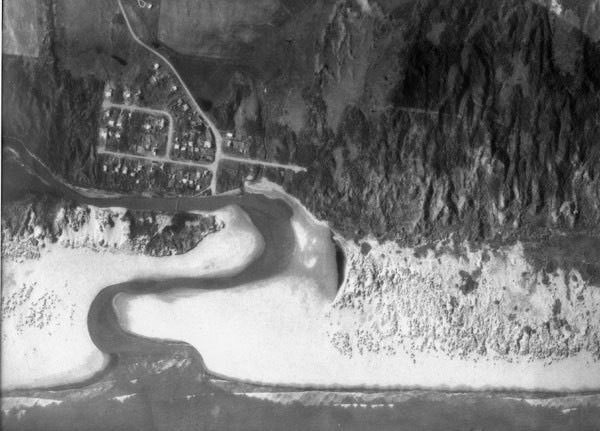
First published 17 April 2020.
This Covid–19 version of Waikawa Beach, with roads empty of cars, vans and trucks, is how some longtime locals remember the good old days: “Waikawa the way it used to be”, as one said on Facebook. So, how did it used to be?
Waikawa Beach (sometimes known as Manakau Beach) was an extremely busy place back in the 1800s. Māori had lived here since long before, making a good living from the sea and lagoons.
But before that even there were moa and moa hunters. Moa bones were found along Takapu Road in 1962.
Te Rauparaha settled here for a while in the 1820s — there’s a Heritage Trail information sign along Waikawa Beach Road pointing out where his pa used to be. [Note, 17 April 2023, that sign disappeared after a car crashed into it but we’re trying to get it back.]
By the 1840s Europeans arrived and started farming and other activities such as flax and flour milling and boat building. There was a hotel, and the beach was the main, or only route, between Whanganui and Wellington. According to the book Bitter Water there were at least 3,000 people living here in 1845.
The late 1800s though brought road and rail nearby, and as time moved on, of course, life changed and the population dwindled.
By the time Bob Semple, Minister of Public Works, built a bach at Waikawa Beach in 1935, there were very few people here, and only a handful of baches.
Things started to pick up in the 1950s when Arthur and Drake Streets came to be. In the 60s a small dairy, public toilets, and the northern half of Manga Pirau Street arrived. In the 70s more small streets were added and the Waikawa Beach Ratepayers Association was formed. Its primary concerns were river erosion, fire safety and a public telephone. By 1978 there were 8 permanent residents.
In the last 40 years there has been more development, with additional housing in Strathnaver and the area around Emma Drive. Life has become busier, but there are no shops or cafes. Daily life bubbles along, but in other years an influx of holiday makers has been the way of life at Easter and other holidays.
This year, of course, Waikawa Beach is quiet; quieter than it has been for decades. It’s rather pleasant…
Acknowledgement: the now out-of-print book Bitter Water by Deb Shepherd and Laraine Shepherd.
Also published in Ōtaki Today 17 April 2020, Page 18.